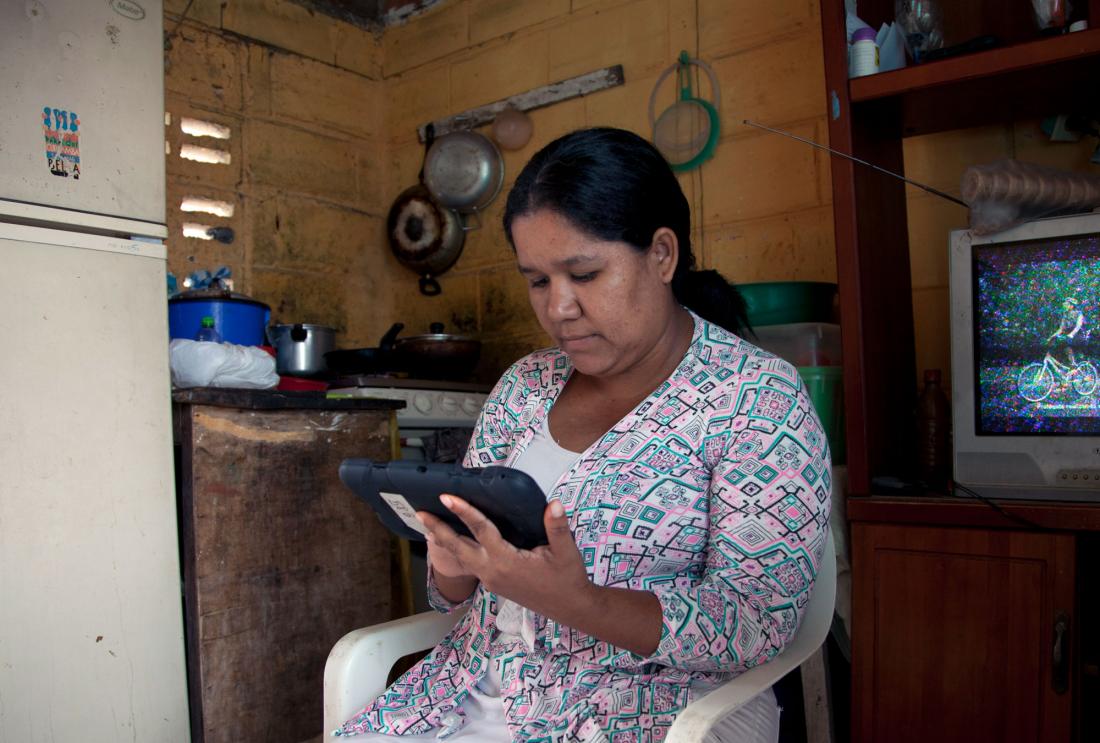Eliminating Behavioral Barriers to Saving through a Tablet App for the Base of the Pyramid in Paraguay
- Urban population
- Savings/deposits
- Digital and mobile
- Information
- Nudges and reminders
- Savings
Despite the benefits of accumulating savings, low-income individuals rarely use formal savings products. Researchers are partnering with a financial institution in Paraguay to evaluate the impact of a range of tablet-based applications, which remind people to save and help them make savings goals, on savings behavior of low-income individuals.
الموضوع الأساسي
Savings can provide a safety net for low-income individuals by enabling them to mitigate potential risks, build assets for their future, and smooth their consumption during periods of low income. However, low-income individuals often do not use formal savings products and may not respond to traditional means of encouraging savings, such opening a savings account for them or providing information about the benefits of savings. One potential strategy to help individuals save is to provide frequent reminders or assistance with setting financial goals. Can these solutions, delivered through text messages or a tablet, help individuals save?
سياق التقييم
This study takes place among low-income individuals in Paraguay in partnership with Banco Familiar, a private financial institution with locations throughout Paraguay. Banco Familiar provides financial services to individuals and micro-, small-, and medium-sized businesses. In 2012 Banco Familiar has expanded its credit supply to individuals who are unbanked, low-income, or vulnerable.

معلومات تفصيلية عن التدخل
Researchers are partnering with Banco Familiar to conduct a randomized evaluation to identify the key barriers that low-income individuals face in saving and whether a traditional bank can feasibly implement solutions to overcome these barriers. Researchers will evaluate the impact of various tablet-based interventions, which remind low-income individuals to save and help them set savings goals, on their savings behavior. Starting in April 2017, 4,000 individuals are randomly assigned to one of five app-based treatment groups or to a comparison group. The different groups receive one of the following interventions:
- Message only (comparison group): One short message on a tablet reminding individuals of the importance of saving.
- Message + text reminders: The same message as the comparison group, plus monthly text message reminders for up to six months.
- Savings goal: A calculation on a tablet that states how much money the individual is currently saving based on income and spending data, which individuals use to build a savings goal.
- Savings goal + text reminders: The same savings goal calculation as the savings goal group, plus monthly text message reminders for up to six months to save for their monthly goal.
- Purchasing goal + optional text reminders: An invitation for the individuals to pick a good or service and state how much they would be willing to save in order to buy it in the future. Individuals are offered a monthly text reminder to save a given amount toward their goal.
- Foreseeable emergencies calculation + text reminders: A calculation by a tablet stating how much financial cushion individuals should have based on fluctuations in their income and expenses. Individuals will also receive monthly text reminders to save a given amount to protect against these emergencies.
النتائج والدروس المستفادة بشأن السياسات
Research ongoing, results forthcoming.
